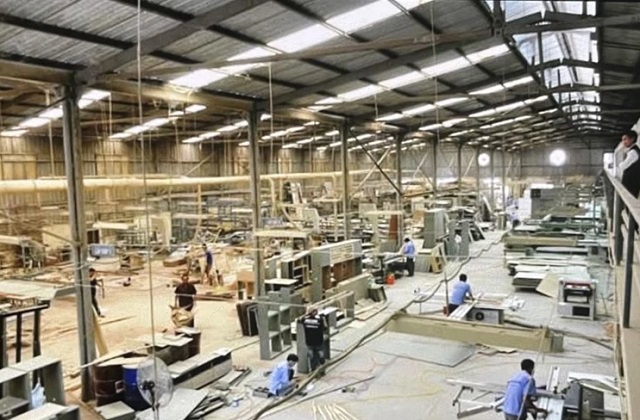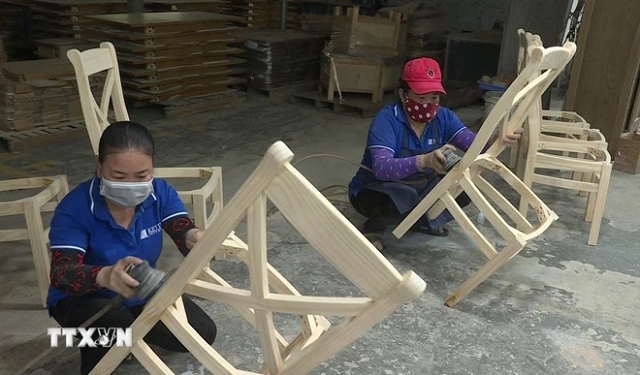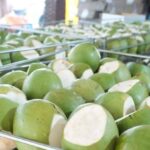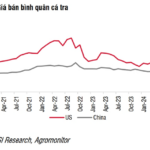
|
Manufacturing furniture at Manh He Furniture Co., Ltd., Ho Chi Minh City. (Photo: Hong Nhung/VNA)
|
Market fluctuations in 2024 have significantly impacted the processing and export activities of Vietnam’s wood industry.
However, while navigating the regulations and market changes of wood-importing countries, Vietnamese wood processing and exporting enterprises have managed to find opportunities to turn the tide and surpass their goals.
According to statistics from the General Department of Customs, the export turnover of Vietnam’s wood industry in the first 11 months of 2024 is estimated at more than $14.6 billion, gradually approaching the adjusted goal of $15.2 billion set in mid-2024.
Wood industry experts evaluate that, with positive recovery signals from the market, since the beginning of 2024, wood processing and exporting associations and enterprises have been proactive in production and seeking export markets.
A series of trade fairs to seek markets and attract customers interested in Vietnamese wood products have been organized in key wood-producing localities such as Ho Chi Minh City, Binh Dinh, and Binh Duong.
According to Mr. Nguyen Chanh Phuong, Vice Chairman of Ho Chi Minh City Fine Arts and Wood Processing Association (Hawa), the wood industry is now relatively stable. Among the import markets for Vietnam’s wood and handicraft products, the US market accounts for more than 54% of export turnover.
However, this market always contains unpredictable factors, keeping enterprises importing into this market on their toes due to tax policies on imported goods. Nevertheless, enterprises always strive to obtain the latest information to flexibly meet the requirements of the US market.
Enterprises in Binh Duong, Dong Nai, and Binh Dinh, where there are many wood processing factories, are also actively seeking opportunities to break through the market.
Mr. Nguyen Liem, Chairman of Binh Duong Wood Association, shared a similar assessment of the efforts of wood enterprises. Some enterprises in Binh Duong province have also come up with unique product designs and introduced them to international customers. To expand their outreach more flexibly, many enterprises have also changed their sales strategy by utilizing e-commerce channels instead of wholesale exports only. Businesses that can adapt to the changing nature of trade will thrive.
Regarding Dong Nai’s wood products, enterprises in this province have exported to 50 countries and territories, with the main markets being the US, Europe, Japan, South Korea, and China.
According to statistics from the Dong Nai Statistics Office, up to now, the export turnover of Dong Nai wood products is estimated at $1.3 billion, up 14.3% compared to 2023. This growth result is thanks to the breakthrough of enterprises that have a good grasp of the market.
Although exports have brought many results to the wood industry, wood processing and exporting enterprises have not ignored the opportunities for domestic furniture consumption or left the market open for foreign goods to dominate.
Specifically, wood industry experts have encouraged domestic enterprises to turn their attention to meeting domestic demand. Up to now, this market has been largely untapped, fragmented, and dominated by imported products or only served by small production units.

|
Wood product manufacturing for export in Binh Duong. (Photo: VNA)
|
According to Mr. Nguyen Quoc Khanh, Chairman of the Board of Directors of AA Corporation, the domestic furniture market in Vietnam, including wood products, other furniture, and construction materials for indoor spaces, is estimated to be worth no less than $10 billion. The domestic market, with a population of 100 million people, including a growing middle class, is the best source of consumption for Vietnamese wood product processing enterprises.
Associate Professor, Dr. Vu Hong Cuong, Vice Chairman of Vietnam Furniture Association, commented that so far, domestic wood processing enterprises have not yet affirmed their position in terms of design and domestic brand, nor have they had a product line that leaves a unique impression, although the production and design potential of enterprises is very high. The high-end segment is mainly imported from European markets. The middle and low-end furniture groups are still confused about design and style. This makes the preference for imported goods still prevalent among consumers. Therefore, while exports are the main goal of the Vietnamese wood processing industry, if the domestic market is well exploited, wood processing and exporting enterprises will be able to build a strong brand for both domestic and international consumers.
Mr. Do Xuan Lap, Chairman of Vietnam Timber and Forest Products Association, emphasized that enterprises need to focus on improving their competitiveness based on five main pillars: production technology and techniques, emission reduction in production, governance, trade promotion, and internal supervision standard building. When Vietnamese wood processing enterprises successfully implement these criteria, they can enhance the competitiveness of domestic wood products against foreign and FDI enterprises in Vietnam.
Hong Nhung
The American Inventory Slump: Can the “Tra Fish Queen” VHC Seize the Opportunity to Triumph?
Mrs. Truong Thi Le Khanh, dubbed the ‘Catfish Queen’, has seen a successful third quarter for Vinh Hoan Corporation (HOSE: VHC), achieving one of the two scenarios set out at the beginning of the year.









































